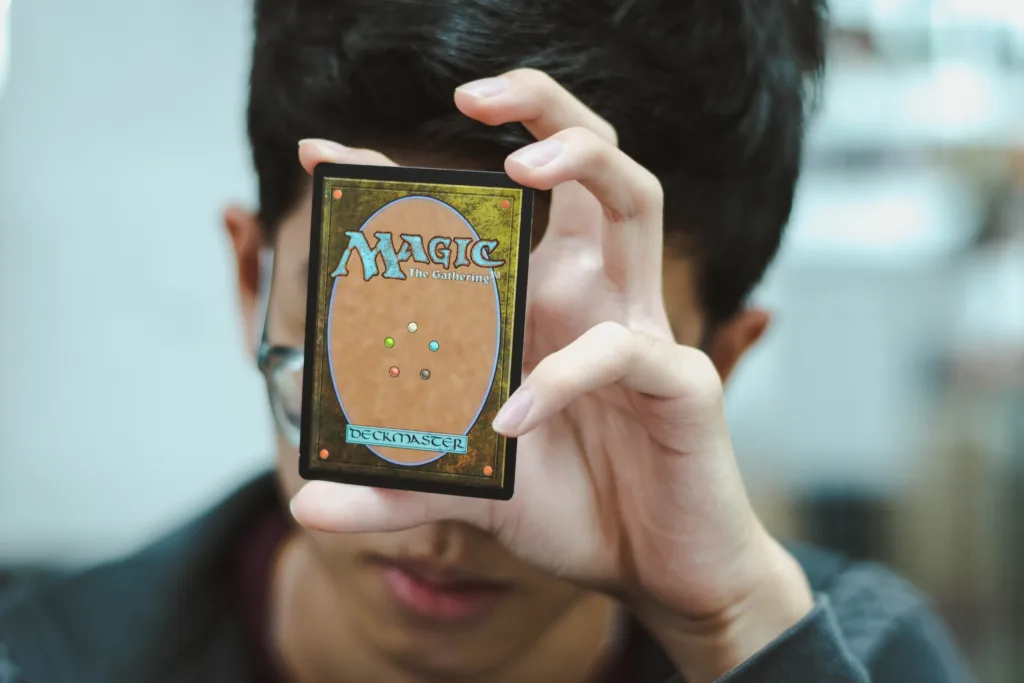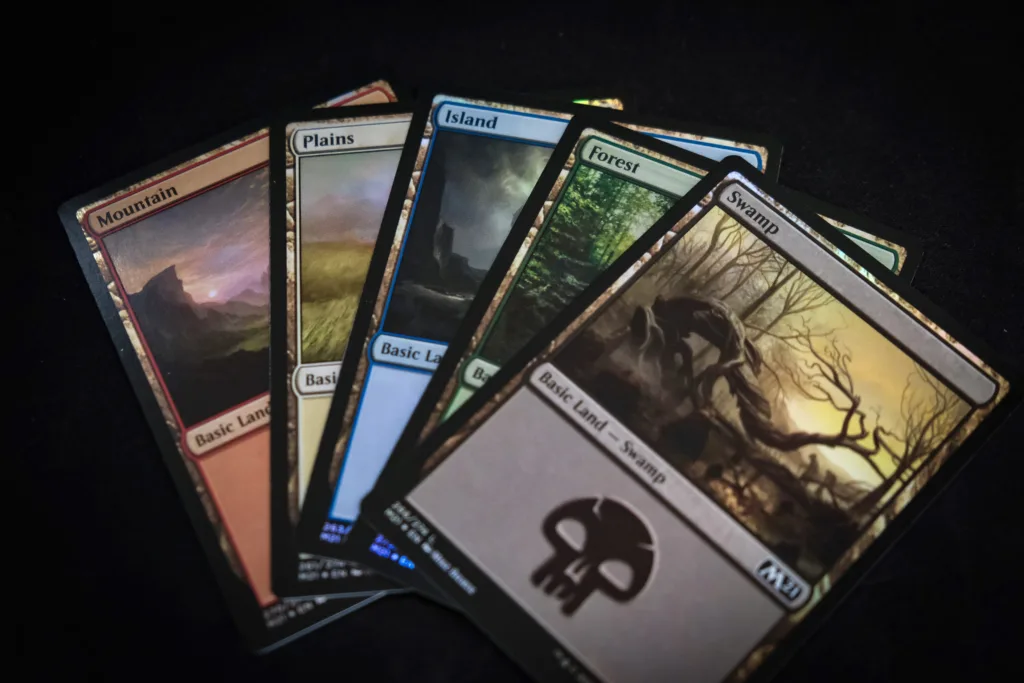Magic: The Gathering (MTG) is a popular collectible card game that has captured the imaginations of millions of players worldwide. With its intricate gameplay mechanics and vast array of cards, MTG offers a unique and immersive experience that keeps players coming back for more. One fundamental concept in MTG is the concept of permanents.
Permanents are a crucial aspect of the game, representing various elements such as lands, creatures, artifacts, enchantments, planeswalkers, and even token creatures. These permanents enter the battlefield after being cast or created, and they play a significant role in shaping the gameplay dynamics.
Lands, the foundation of any MTG deck, are considered colorless permanents. When played, lands generate mana, which is the game’s resource used to cast spells and activate abilities. Mana is crucial for executing game-changing strategies and summoning powerful creatures or casting devastating spells.
Creatures, on the other hand, are the backbone of any army in MTG. They come in various shapes, sizes, and abilities, each bringing its own unique strengths to the battlefield. Creatures can attack opponents, defend against enemy assaults, and interact with other cards through their abilities. They have power and toughness values, which determines their combat prowess and durability.
Artifacts are another class of permanents that can have a wide range of effects. These non-creature cards can provide various advantages, such as enhancing your creatures’ abilities, generating additional mana, or even dealing direct damage to opponents. Artifacts can be powerful game-changers, allowing players to gain an edge and control the flow of the game.
Enchantments are magical spells that have a lasting effect on the game. Once played, they attach to a permanent, such as a creature or land, and modify its abilities or characteristics. Enchantments can grant additional power, protection, or even impose restrictions on opponents. They add depth and complexity to the gameplay, allowing for strategic decision-making and tactical maneuvering.
Planeswalkers are unique and powerful characters in the MTG universe. Represented by specialized cards, planeswalkers can be used as allies on the battlefield. They possess their own loyalty counters, which players can use to activate their abilities. These abilities can range from dealing damage, drawing cards, or even summoning creatures. Planeswalkers are coveted assets that can turn the tide of battle and require careful management to utilize effectively.
Token creatures, unlike regular creatures, are not represented by cards with casting costs. They are created by the effects of various spells and abilities during the game. Tokens serve as temporary creatures, usually with specific characteristics and abilities. Although they are not considered regular cards, they still count as permanents and can interact with other cards on the battlefield.
It is worth noting that not everything in MTG is considered a permanent. Instants and sorceries, for example, are non-permanents. These cards are played directly from the hand and often have immediate effects, such as dealing damage, countering spells, or drawing cards. They do not stay on the battlefield like permanents but can have a significant impact on the game’s outcome.
Permanents play a vital role in MTG, acting as the foundation for players’ strategies. Lands generate mana, creatures form armies, artifacts provide extra abilities, enchantments modify cards, and planeswalkers offer powerful abilities. Understanding the various types of permanents and how they interact is crucial to mastering the game and emerging victorious. So, gather your cards, build your deck, and dive into the captivating world of Magic: The Gathering!
Are Creatures Permanents Magic?
Creatures are considered permanents in the game of Magic: The Gathering. In Magic, permanents are cards that remain on the battlefield once they have been cast or played. Creatures, along with lands, artifacts, enchantments, and planeswalkers, fall under the category of permanents.
When you cast a creature spell, it enters the battlefield and becomes a permanent. This means that it remains in play until it is removed by game mechanics or other card effects. Creatures are an integral part of the game, representing various creatures with different abilities and power levels.
It’s important to note that not all cards in Magic are permanents. Instants and sorceries, for example, are not considered permanents because they are not meant to stay on the battlefield. They have an immediate effect and are then placed into the graveyard.
Creatures are indeed permanents in Magic: The Gathering. They enter the battlefield and remain there as long as they are not removed by game mechanics or card effects. This distinction is important when considering various interactions and strategies within the game.

What Is Not A Permanent In MTG?
In Magic: The Gathering, there are several objects and entities that are not considered permanents. These include:
1. Sorceries: Sorceries are one-time spells that have an immediate effect when cast from the hand, but they do not enter the battlefield and are not considered permanents.
2. Instants: Similar to sorceries, instants are spells that can be cast at any time, even during other players’ turns. They also do not enter the battlefield and are not considered permanents.
3. Triggered Abilities: These are abilities that activate automatically when certain conditions are met. While they may have effects on the battlefield, triggered abilities themselves are not permanents.
4. Activated Abilities: These are abilities that can be activated by paying a cost, usually using mana. Like triggered abilities, activated abilities have effects on the battlefield but are not permanents themselves.
5. Emblems: Emblems are special objects that are created by certain planeswalker cards. They have ongoing effects, but they are not permanents and cannot be interacted with or removed from the game.
6. Counters: Counters are objects placed on permanents to keep track of certain game effects, such as +1/+1 counters or loyalty counters on planeswalkers. While they are physically represented on the battlefield, counters themselves are not considered permanents.
7. Players: In Magic: The Gathering, the players themselves are not considered permanents. They are the individuals controlling the game and making decisions, but they are not physical objects within the game itself.
It is important to note that while these objects are not considered permanents, they can still have significant impacts on the game and its mechanics. Understanding the distinction between permanents and non-permanents is crucial for strategic gameplay and rule comprehension.
Do Lands Count As Permanents?
Lands do count as permanents in the game of Magic: The Gathering. According to the rules of the game, permanents are cards or tokens that remain on the battlefield once they have been cast or put into play. They typically have a lasting presence and can have various effects or abilities.
Lands are one type of permanent in Magic: The Gathering. They are colorless cards that represent the player’s ability to generate mana, which is necessary to cast spells and activate abilities. Players can play one land card per turn and tap them to produce mana of a specific color or type, depending on the land’s characteristics.
Lands are an essential part of a player’s strategy as they provide the necessary resources to cast spells and play other permanents. They can also have additional abilities or effects that can impact the game. For example, some lands may have the ability to tap for multiple colors of mana or have an activated ability that allows the player to gain an advantage.
Lands are indeed considered permanents in Magic: The Gathering. They play a crucial role in providing mana and can have additional abilities or effects that contribute to the overall gameplay strategy.
Are Creature Tokens Considered Permanents?
Creature tokens are considered permanents in the game of Magic: The Gathering. Permanents are cards or tokens that remain on the battlefield after they are cast or created. Creature tokens are created by the effects of various spells and abilities, and they function just like regular creature cards once they are on the battlefield.
Here are some key points to further explain the topic:
– Creature tokens are not represented by regular cards with casting costs. Instead, they are created directly on the battlefield by the effects of certain spells or abilities.
– Once a creature token is created, it stays on the battlefield until it is destroyed, exiled, or otherwise removed from the game.
– Creature tokens have all the characteristics of regular creature cards, such as power, toughness, types, and abilities. They can attack, block, and interact with other permanents and players just like any other creature.
– Creature tokens are subject to the same rules and mechanics as regular creatures. For example, they can be targeted by spells or abilities that specifically target creatures, and they can be affected by enchantments or other effects that modify creatures.
– While creature tokens are considered permanents, it’s important to note that they are not cards themselves. They cannot be included in a deck or sideboard, and they do not have any existence outside of the game. They only exist as long as the game is being played.
Creature tokens are indeed considered permanents in Magic: The Gathering. They function like regular creature cards and abide by the same rules and mechanics. However, they are not actual cards and only exist within the context of the game.

Conclusion
Magic the Gathering is a complex and strategic collectible card game that has captivated millions of players worldwide. Its rich lore, intricate gameplay mechanics, and constantly evolving card pool make it a unique and engaging experience. The game revolves around the concept of permanents, which include lands, creatures, artifacts, enchantments, and planeswalkers that enter the battlefield and interact with each other. Tokens, which are not represented by regular cards, also fall under the category of permanents.
Magic the Gathering offers a vast array of options for players to build their decks, allowing for endless possibilities and strategies. The game requires careful planning, resource management, and tactical decision-making. Players must consider various factors such as card synergies, mana curve, and the overall balance of their deck to achieve victory.
The game’s competitive scene is thriving, with numerous tournaments and events held regularly. Players can test their skills and compete against others, showcasing their deck-building prowess and tactical abilities. Additionally, Magic the Gathering has a strong community of dedicated players who share their knowledge, experiences, and strategies online, fostering a sense of camaraderie and collaboration.
Magic the Gathering also offers a wide range of formats, catering to different playstyles and preferences. From Standard, which features the most recent sets, to Modern and Commander, which allow for a larger card pool and unique deck-building restrictions, there is something for everyone.
Magic the Gathering is a game that provides endless hours of entertainment, strategic thinking, and social interaction. Its combination of immersive lore, challenging gameplay, and a passionate player base make it a beloved and enduring staple of the gaming world. Whether you’re a seasoned veteran or a newcomer, Magic the Gathering offers an experience like no other. So gather your cards, build your deck, and embark on an unforgettable journey into the world of Magic.
